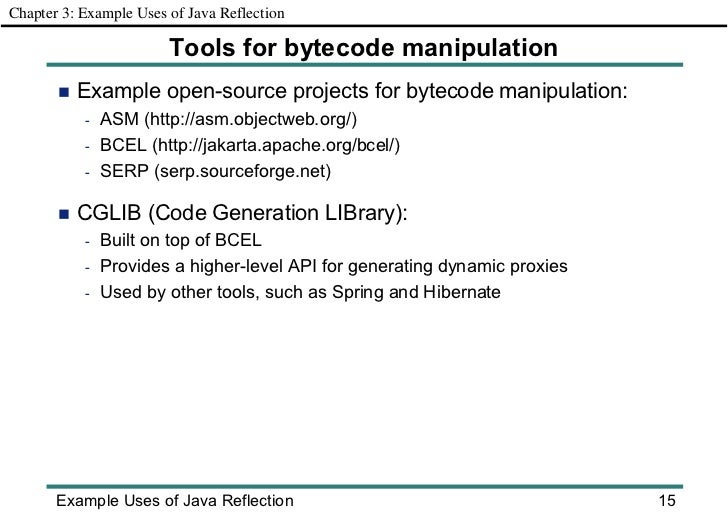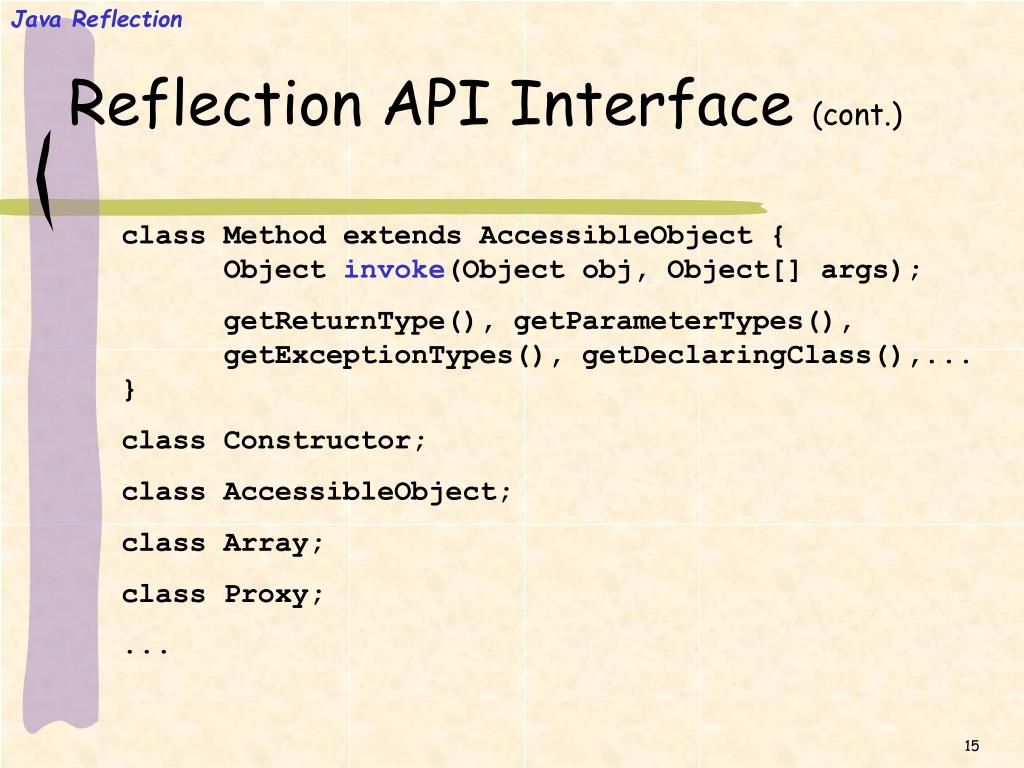

- #JAVA REFLECTION USE CASE HOW TO#
- #JAVA REFLECTION USE CASE SOFTWARE#
- #JAVA REFLECTION USE CASE CODE#
Test harnesses can make use of reflection to systematically call a discoverable set APIs defined on a class, to insure a high level of code coverage in a test suite.


Share Improve this answer answered at 13:55 jodonnell 49k 10 61 67 Add a comment 1 I generally use reflection for debugging. And there are tons of one-off cases where it's really the only way to go (pretty much anytime you need to do something the compiler won't let you do). Visual development environments can benefit from making use of type information available in reflection to aid the developer in writing correct code. In Java it's used in JMX and dynamic proxies quite a bit.
#JAVA REFLECTION USE CASE HOW TO#
This subsection will show how to obtain this information. In many cases, especially while using library classes or Java's built-in classes, we may not know beforehand the superclass of an object we are using. With that caveat in mind, reflection is a powerful technique and can enable applications to perform operations which would otherwise be impossible. JanuReflection is a built-in mechanism to introspect a Java program at the time of execution. We are also able to obtain the superclass of any Java class by using Java reflection. This is a relatively advanced feature and should be used only by developers who have a strong grasp of the fundamentals of the language. Reflection is commonly used by programs which require the ability to examine or modify the runtime behavior of applications running in the Java virtual machine.

reflect(): Reflects on an instance of a class What is Reflection in Java Reflection is an API which is used to examine or modify the behavior of methods, classes, interfaces at runtime.To reflect on types and objects we have three methods to work with: As a result, we can modify the behavior of this object at runtime. Then we use the Reflection API on this object. More information can be obtained in the Oracle tutorial. Java Reflection API is used to manipulate class and its. You should analyse on a case by case basis. Java Reflection is a process of examining or modifying the run time behavior of a class at run time. If you can do something without reflection, you probably should. In the above representation, we can see that we have an unknown object. The basic rule is: Only use Reflection when there’s no easier alternative. The Reflection process is depicted below. Before we implement our reflection logic, let’s also define a class with a method we wish to invoke: import 'dart:mirrors' Reflection is an Application Programming Interface (API) provided by Java. We will end by looking at a common use case with Annotations.Ĭreate a main.dart file and start by importing our dart:mirrors dependency. We will be working with the dart:mirrors library which contains helper classes and functions for achieving this. Reflection allows us to examine and modify the structure and behaviour of a program at runtime. The tool uses reflection to obtain the properties of Java components (classes) as they are dynamically loaded.
#JAVA REFLECTION USE CASE SOFTWARE#
In this video, we will explore the topic of Reflection and how that can be used to write cleaner software. One tangible use of reflection is in JavaBeans, where software components can be manipulated visually via a builder tool.


 0 kommentar(er)
0 kommentar(er)
